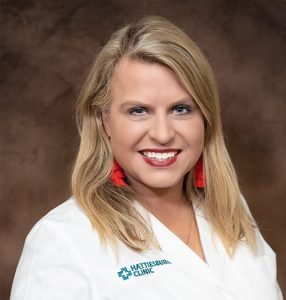In a world where artificial intelligence is becoming a more common tool in healthcare, from electronic health records to AI scribes that document patient visits, former Mississippi State Medical Association President and family physician Dr. Jennifer Bryan is bringing a new voice to the conversation.
Bryan cautions that while AI offers promise, it also poses risks when errors enter patient records. Those concerns have led her to create “Quiet Signal Technologies,” a consulting and licensing program on clinical AI governance and full transparency with patients.
Bryan said AI technology has helped her spend less time typing and more time with patients.
“The time that it has saved me, and the return of looking at my patient as opposed to the keyboard, has been immense,” she said in an interview on Mary Wieden and You.
However, she cautions that physicians must edit and verify records daily because errors are inevitable.
“It’s never going to be perfect,” Bryan said, “The medical record needs to be accurate. It matters.”
Those gaps in recordkeeping were underscored during the interview when Wieden described a hospital stay that never appeared in her physician’s file. Bryan noted that those kinds of omissions – and the conclusion that AI software can sometimes insert automatically – make governance essential.

“Many times, it’ll make conclusions that are not accurate, and in some records, even automatically put that on the history,” she said.
Her company’s platform, known as Shimmer Frame, overlays with existing medical record systems to provide oversight. It flags whether information comes from AI or a human, identifies the source, and highlights confidence levels behind entries, ensuring that AI never overrides the judgment of a credentialed provider.
“These inaccuracies pollute charts, confuse patients, and place physicians at risk of liability,” Bryan said. “We need a process to filter these errors at the bedside, before they become part of the permanent record.”
According to Bryan, as many as 88% of health systems nationwide lack proper AI governance. That gap, she argued, makes safeguards all the more urgent to prevent false diagnoses and unnecessary anxiety for patients.
“We don’t want the patient seeing things at home that would scare them, that are not real,” she said.
Bryan added that Mississippi is already helping lead the national discussion. In June, its congressional delegation pushed forward national policy on AI governance that was unanimously approved by more than 700 physicians at the American Medical Association’s annual meeting. Bryan, elected to the AMA’s Council on Science and Public Health, said her company’s work reflects those same principles.
Even as Shimmer Frame moves through early testing and development, Bryan said the larger goal remains clear.
“Technology is making our lives better, but we have to integrate it responsibly,” she said. “Patients deserve accuracy, physicians deserve protection, and healthcare deserves governance.”








